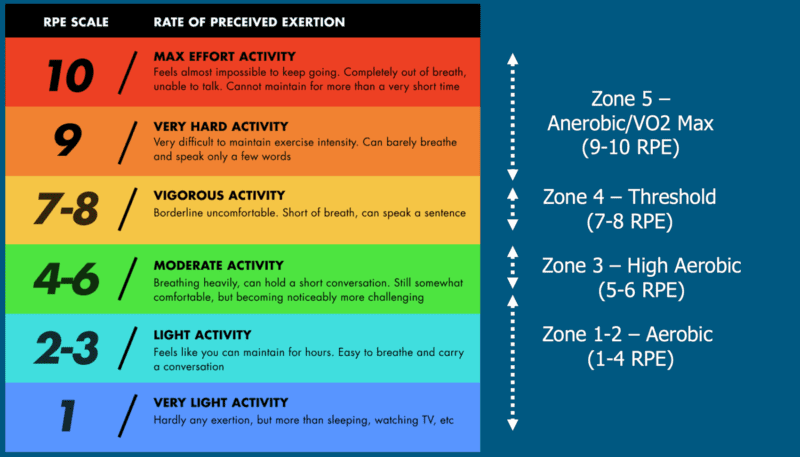5 Main Differences between Easy Runs and Long Runs
Runners often use the terms easy runs and long runs interchangeably.
However, these are two specific, different training types. You will usually find both of these training types in every runner’s training plan.
In this article, you will find out what are the main differences between easy runs and long runs.
The main differences between easy runs and long runs are their purpose, duration, distance, pace, and frequency. Easy runs are used as warm-up and cooldown after training, while long runs develop your aerobic capabilities, as well as mentally prepare you for the exertion of a race.
Below I will explain in detail the 5 main differences between easy runs and long runs.

1. Purpose of training
Easy runs are used as a form of warm-up before training or as a form of cooldown after training. Easy runs can also be used as a recovery run, a completely separate training.
Read more: Warm-up Before Running (Ultimate Guide)
Easy runs improve your circulation. Due to that, you recover faster and are better prepared for the next workout.
Likewise, you might occasionally feel overwhelmed by training, feeling mentally and physically exhausted. Easy runs will help you recover while keeping you active.
Furthermore, they are an ideal opportunity to adopt and improve your running technique.
Easy runs cause a lot less stress on the body than long runs, while still helping you increase your total weekly mileage, leading to an improvement in your aerobic capabilities. By building endurance and aerobic capacity, you become a more efficient and better runner.
You can do easy runs more often and longer without increasing the risk of injury or the appearance of overtraining.
On the other hand, long runs are their own type of training. They are meant for increasing your aerobic capabilities, improving your endurance and fatigue resistance, through the development of mitochondria and capillaries which results in more oxygen being brought to your muscles.
Likewise, they help you develop the ability to burn fat for fuel, develop your self-confidence, and mentally prepare you for a race.
Read more: The Purpose of the Long Run (21 Long Run Benefits)

2. Duration
Generally speaking, if an easy run is part of a warm-up or cooldown, it takes around 10–15 minutes, and if you do an easy run as a separate workout it takes around 30 minutes.
On the other hand, long runs take 1–3 hours on average, depending on the race you are preparing for, the part of your training cycle, and your training experience.
3. Distance
On average, easy runs are between 3 and 5 miles long, while long runs consist of 25–30% of your total weekly mileage.
Example
If your weekly mileage is 30 miles, then your long run shouldn’t be longer than 9 miles.
Naturally, the distance of your long runs depends on multiple factors, such as your goal, the purpose of the workout, your experience, and the part of your training cycle.
Example
The closer you are to the day of a race, the shorter your long runs will be.
Read more: How Long Is Too Long for a Long Run? (Answered)

4. Pace
There is no need to track your pace while you’re doing an easy run. Instead, it’s better to run by feel. Meanwhile, it is important to predetermine pace and running intensity when doing a long run.
Easy runs should be, as the name says, of easy intensity, and you should feel comfortable and relaxed during them. According to the rate of perceived exertion (RPE), their level of exertion is between 1 and 3.

You cannot run an easy run too slow. A common mistake that beginners do is running too fast. Your subjective feeling can fool you, so it is advisable that you use a smartwatch.
Generally speaking, easy runs are around 3–4 minutes per mile slower than your current 5K pace.
However, keep in mind that it is hard to determine the proper pace for easy runs since it can vary from day to day.
Your pace depends on your daily activities, the amount of sleep you’ve had, whether you’re feeling tired, your menstrual cycle, weather, etc.
One day your pace for an easy run can be 9 minutes per mile, and on the other, you might struggle to maintain that pace and you have to slow down to stay within the set rate of exertion.
Tip
It is better to run slower than faster. Regardless of how good you feel that day, if an easy run is on your schedule, don’t run too fast. Instead, save yourselves for the days when you have tougher workouts on your schedule. Every workout has its purpose, including the day when an easy run is on your schedule.
Tracking your heart rate can help you determine the zone of your easy runs.
Easy runs fall in zone 1 or 2, or up to 70% of your maximum heart rate, which is 120–130 bpm for most people.

Tracking heart rate is a great method for runners, as long as they are aware that their heart rate can vary depending on conditions and numerous factors such as weather, terrain, hydration, diet, amount of sleep, everyday stress, and the overall feeling for a day.
You may have to run at a different pace to stay within a certain zone.
Tip
Your body doesn’t feel running pace, it only feels exertion. Heartbeats and perceived exertion can help you determine the zone of your easy runs.
As I have already mentioned, it is important to predetermine your pace and running intensity for long runs.
Running pace and running intensity vary depending on the type of long run you’re doing, your current fitness level, experience, and the terrain on which you’re running.
If you have to do a long slow distance run, then you run it like an easy run, at a conversational pace.
This means that you should be able to speak normally while running, without losing your breath in the process.
According to the RPE scale, your exertion level should be around 2 or 3. Also, your pace should be around 55–75% of your current 5K pace.
Examle
If my current average 5K pace is 6:30 min/mi, then your long run pace should be from 8:15 min/mi to 9:07 min/mi.
Also, tracking your heart rate can be a guide when determining your pace. In that case, long runs are done in zones 2 and 3, or 60–75% of your maximum heart rate, which is around 130–140 bpm for most people.

Info
There are multiple ways to determine the intensity and exertion at which you will perform a long run: by following a predetermined running pace, tracking your heart rate, and according to your subjective feeling.
If a long run at a race pace is on your schedule, then you will run the first part of the workout as previously described, and you will run certain predetermined segments at a race pace, for example, a half-marathon or a marathon race pace.
Read more: What is Considered a Long Run? (5 Long Run Examples)
Read more: Easy Runs – Essential Workout for Every Runner
5. Workout frequency
You can do easy runs every day, while it is generally advised to do long runs once a week.
Intensive workouts are, of course, good for a runner’s progress. However, easy runs will make up the most of your weekly mileage.

Matea Matošević
Hi, I’m Matea! I’m an Olympic Marathon Runner, founder, and writer behind OLYRUN.com. On this site, I provide help in the form of my knowledge and experience to all who love running and active living. Read more…

